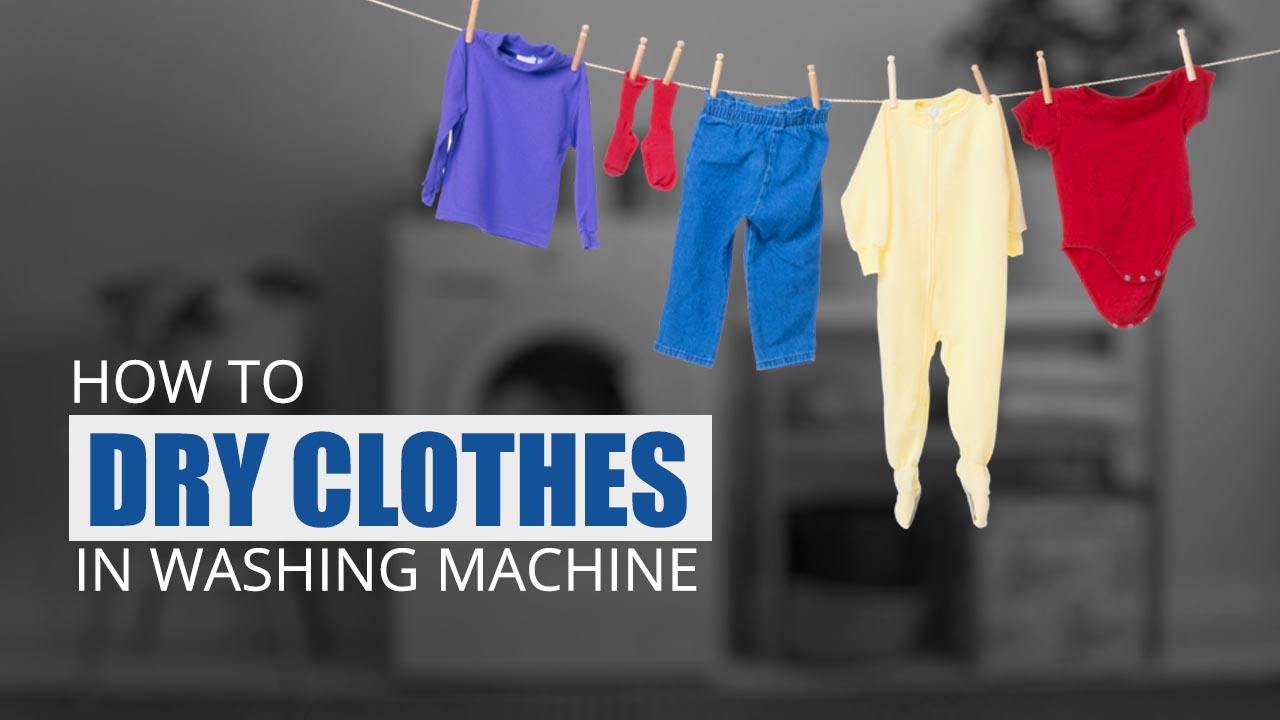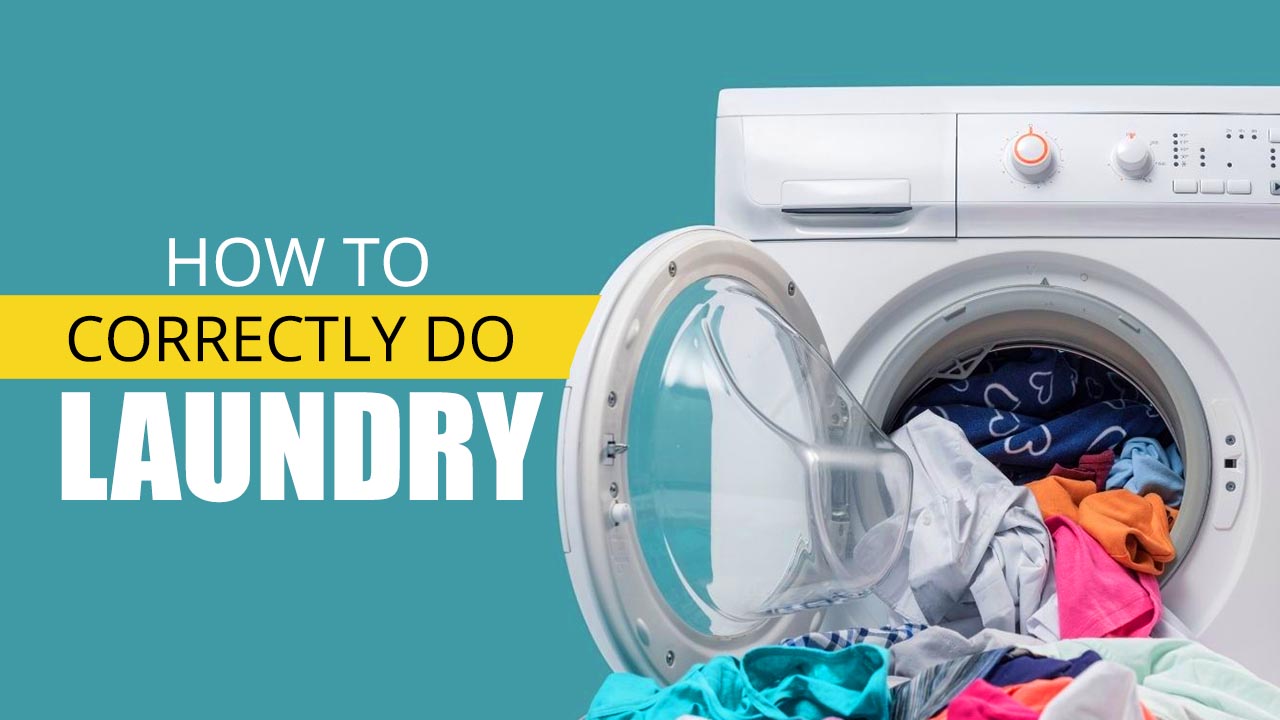Dying is an essential part of any laundry day, which is why knowing how to dry clothes in washing machine is important. After all, purchasing the best washing machine you can find isn’t enough – you must know how to utilize its various functions. To help you make drying your clothes easy, we have put together all the tips and tricks you should know about how to dry clothes in washing machine!
Washing clothes is a chore that most of us have to do regularly. Considering how many washing machine brands are offering models in all budget ranges, it is unsurprising that most homes have one. And while it’s not the most fun task in the world, it’s essential to keep our garments clean and free of bacteria. One way to ensure that our clothes are bacteria-free is to dry them properly after washing. When using a washing machine, this is easier said than done. In this article, we’ll share some helpful tips on how to dry clothes in washing machine correctly.
Things to Keep in Mind When Drying Clothes in Washing Machine
Most washing machines work through a cycle of hot and cold air. The machine starts by drawing in cold air from outside and heating it. The hot air is then used to dry the clothes. You can also use the spin cycle at the end of the wash cycle to dry clothes effectively. The clothes are spun at high speed during the spin cycle, which extracts as much water from the clothes as possible, leaving them merely damp. As a result, the spin cycle is an effective way to dry clothes without the need for hot air.
There are several tips and tricks you should know in order to understand how to dry clothes in washing machine. Every tip you must know are mentioned below:
Check the Label
Before adding your clothes to the washing machine, it is always important to check the care label first. The care label will usually have clear instructions on whether the garment can be dried in the machine or not. While it may be tempting to ignore the care label and put everything in the dryer, this can often lead to irreversible damage to your clothes. In some cases, drying a garment in the machine can cause shrinkage, fading, or even a complete loss of shape. So, if you want to keep your clothes looking their best, it’s always best to stick to the care label instructions.
Clear the Fluff Filter
Over some time, your fluff filter will accumulate lint. Not cleaning it for a long time can cause the lint to build-up can cause your device to malfunction. The best practice is to clean your fluff filter every time. Using a cotton cloth, you can clean the filter. You can even use a vacuum cleaner to clear it out thoroughly, just ensure that your machine is absolutely dry when you do so. Ensure that you check the user manual of your machine to find out whether the object is detachable. If yes, simply wash using clean water.
How You Load Your Clothes
If you’re only using the washing machine to dry washed, wet clothes, it’s essential to keep this loading tip in mind. You’re probably not doing it right if you’re loading the entire bundle of washed garments into the washing machine or dryer at once. This may seem easy, however, it can be a little troublesome to do so. We suggest that you load each garment separately. This prevents the entangling of garments in the washing machine or dryer and helps provide the best results. This simple step lets you ensure that your clothes are dried more effectively and efficiently.
Utilizing a Separate Dryer
When using a dryer to dry clothes, it is vital to have a dryer of the same load capacity as your washer. Overloading the dryer can prevent it from working properly. If your dryer is not the same as size as your washer, it is best to divide your load into manageable batches. This will ensure that your clothes are thoroughly dried without damaging the dryer. By following these simple tips, you can extend the life of your dryer and keep your clothes looking their best.
Correct Drying Setting
When you put your clothes in the tumble dryer, choosing the right setting is essential. Different fabrics need to be dried in various locations to stay in good condition. The product manual will tell you the correct setting for each material. For example, delicate fabrics like silk or wool should be dried on a low setting, while fabrics like denim can be dried on a higher setting. By choosing the right setting, you can help extend the life of your clothes.
So many people tend to throw clothes in the dryer, regardless of the fabric. However, this can cause damage to delicate items and shorten their lifespan. For example, chiffon and satin should always be air-dried in partial shade to avoid crushing or fading. Cotton, georgette, and rayon can usually be machine-dried on a low or moderate setting, but you may want to use a mesh bag to protect them from snagging on other items. If you’re unsure about the best way to dry a particular garment, always check the wash care label before throwing it in the machine. With a little bit of care, you can extend the life of your clothes and keep them looking their best.
Keep Zippers Closed
It is crucial to close zippers and unbutton shirts before putting them in the washing machine or dryer. This will prevent snagging and scratches on the surface of the device. Additionally, it is essential to clip underwear before washing them. However, when it comes to shirts, we suggest avoiding buttoning them up as the button-holes can be damaged when being washed.
Other Ways to Dry Your Clothes Quickly
Apart from knowing how to dry clothes in washing machine, you should also know alternate methods to dry your clothes. A lot of times dryers do not produce 100% dry clothes which is why using alternate methods becomes necessary. Read below for some tips to dry your clothes without relying on your dryer:
Towel Dry Method
The towel is one of the most commonly utilized emergency drying methods. It’s simple and effective, so you’ll save time and money on washing machines and power. This method entails spreading a large, dry towel on a flat surface and then placing the clothing to be dried on top of the towel.
This approach will make the surplus water in the clothing travel into the towel. Thus the thicker and more absorbent the towel is, the better it will function.
Begin rolling it up tightly, leaving the garment within, once you’ve positioned it on top of the towel without protruding from the sides. If you roll it nicely, you should have a kind of log, a cylinder with a spiral shape on both sides.
Twist it rapidly to one side and then the other, and if the towel becomes too wet, switch it for another and repeat the process. This will allow them to absorb as much water as possible.
Outdoors
Before the invention of the washing machine, and before we knew how to dry clothes in washing machine, we used to hang our wet clothes outside to dry. It’s still the greatest approach to preserve our clothes in good shape and make them last a long time. However, keep the following in mind:
- Let adequate space between each garment to allow air to circulate.
- You can hang your clothes on the bathroom curtains if you don’t have access to the outside or balcony.
- Close to a heat source, such as heating ducts or a sunny position, is the best place to hang your garments to dry faster.
- Because the sun’s rays can fade the clothing colors, turn them over before hanging them outside.
Hair Dryer
A hairdryer can dry garments in an emergency if you don’t have access to a dryer. We don’t recommend doing it too often because it can harm your clothes, but if you need a dry shirt in a hurry and don’t have any other options, it can save the day.
First and foremost, squeeze the clothing to remove any extra water that has gathered; this will help to speed up the drying process even more. The garment must next be stretched on a flat area near an electrical outlet. Keep the following in mind:
- Wool is one of the textiles that can shrink. Thus it’s best to use the cold air temperature in these instances.
- Pockets and collars and any other heavier portions of the garment will take longer to dry.
- To avoid damaging the clothing fibers, keep the dryer at a safe distance and move it around frequently so that no part of the garment becomes too hot.
What are the right conditions to dry your clothes?
There are three main things that contribute to water evaporating off of wet clothes: high temperatures, air movement, and low humidity. When trying to dry clothes, it is important to keep these things in mind in order to be most effective.
High Temperatures: When you dry your clothes under high heat, the water molecules turn from liquid to gaseous/vapour state and rise up faster, resulting in quickly dried clothes.
Strong Winds: These help by removing the water vapour that accumulates around your clothes while drying, thereby eliminating the possibility of water saturation in the area around your clothes.
Humidity: Low humidity is essential for clothes to dry quickly. In high-humidity areas, water molecules have nowhere to go, therefore staying stuck to the clothes and making the drying process much harder.
How to Dry Clothes in Washing Machine – The Dos and Don’ts
Keep the following Dos and Don’ts in mind when drying your clothes:
Dos
- Speed up the drying process with a simple tip. Along with the wet batch of laundry, add a (dry) towel to the dryer. The towel will hasten drying and aid in water absorption.
- Leave the washing machine’s door and detergent tray open for a while after removing the cleaned load from the appliance. The machine will dry up faster with the help of the air flow, which will also stop mould and odour growth.
- Utilise customised settings for various textiles while using a dryer. IFB clothes dryers offer options for drying cottons, mixed loads, and synthetics, each with a different drying cycle time.
- When drying your clothes on a line/rope, place them on a hanger; this helps to prevent wrinkles, which further simplifies ironing.
- While washing a paired set of clothing, such as a jacket and skirt or a jacket and pants, ensure that you hang them to dry side-by-side. This way the clothes will not won’t fade unevenly if they are washed and dried together.
Don’ts
- We recommend not leaving the laundry in the washer after the wash cycle is complete. Take the load out right away, then set it aside to dry. The moisture from un-dry clothes will cause the machine and your clothes to smell musty and grow mould, both of which are a hassle to clean.
- Drying your black and dark-colored clothing in the sun is a terrible idea as this will result in fading. Make sure you read the label, and dry your clothes in a covered dry place!
- Cramming too many clothes into the dryer can lead to a laundry disaster. Your load might not be as thoroughly dried as it should be as a result and it can overload your machine causing mechanical issues over a period of time.
- Your woollens will dry more quickly if you spread them out on a surface or even a towel rather than hanging them out to dry. Putting them on hooks could cause the cloth to spread out and the garment to lose its shape.
- Drying your clothes indoors is a bad idea as it makes the air more humid and can cause respiratory issues, especially for young children, the elderly, and people with asthma. Either dry them outside or in a dryer.
Conclusion
In conclusion, drying clothes in a washing machine is a simple process that can save you time and energy. By following the tips above, you’ll learn how to dry clothes in washing machine and can ensure that your clothes come out of the dryer looking their best. With a little practice, you’ll be able to confidently dry your clothes in the washing machine – no more trips to the laundromat or spending too much time drying!
Frequently Asked Questions
1. Which setting is best to dry clothes in washing machine?
When choosing the best setting to dry clothes in a washing machine, there are several things to consider. The first is the type of fabric. Another factor to consider is the size of the load. A large load will take longer to dry than a small one, so adjusting the setting accordingly is important. Finally, it’s worth considering the climate of where you live. To know more about more the invention of the washing machine, make sure to read the blog above!
2. Can You Dry Clothes on High Heat?
There is a lot of debate about whether it is better to dry clothes on high heat or low heat. While high heat can cause clothes to shrink or stretch, low heat takes much longer to dry clothes, resulting in them developing musty smells. The best way to avoid these problems is to select the appropriate setting for the type of fabric you are drying. It is best to use a low heat setting or even air dry for delicate fabrics. Use a higher heat setting for more durable fabrics without fear of damaging the material.


